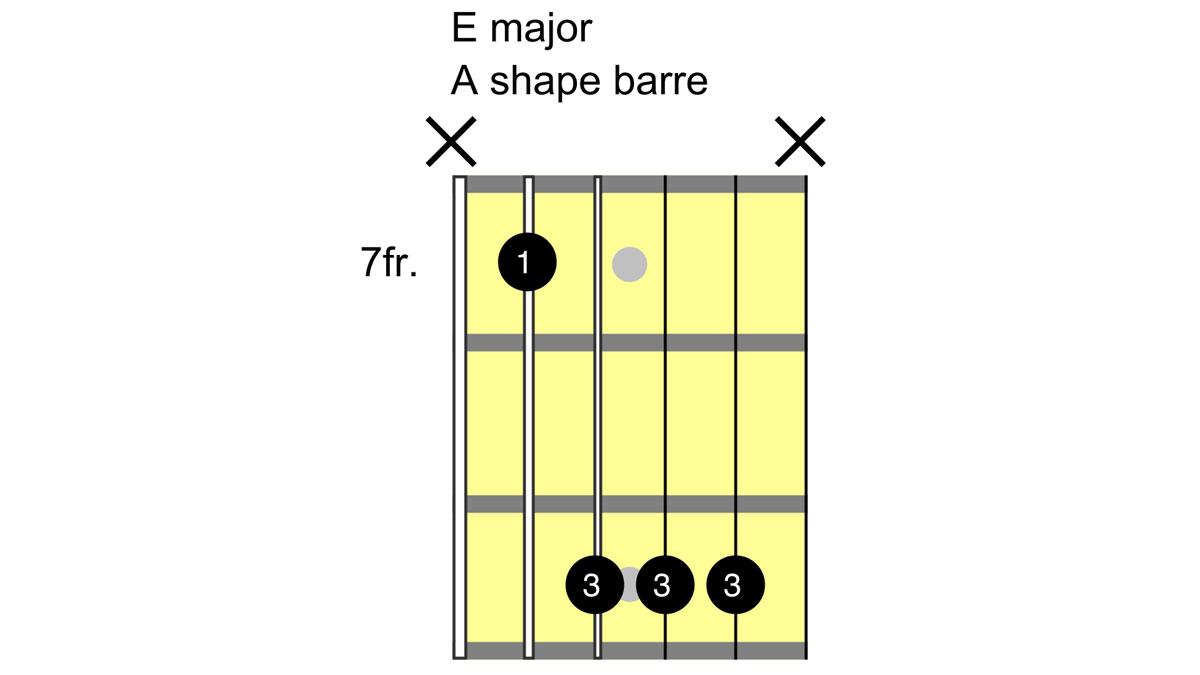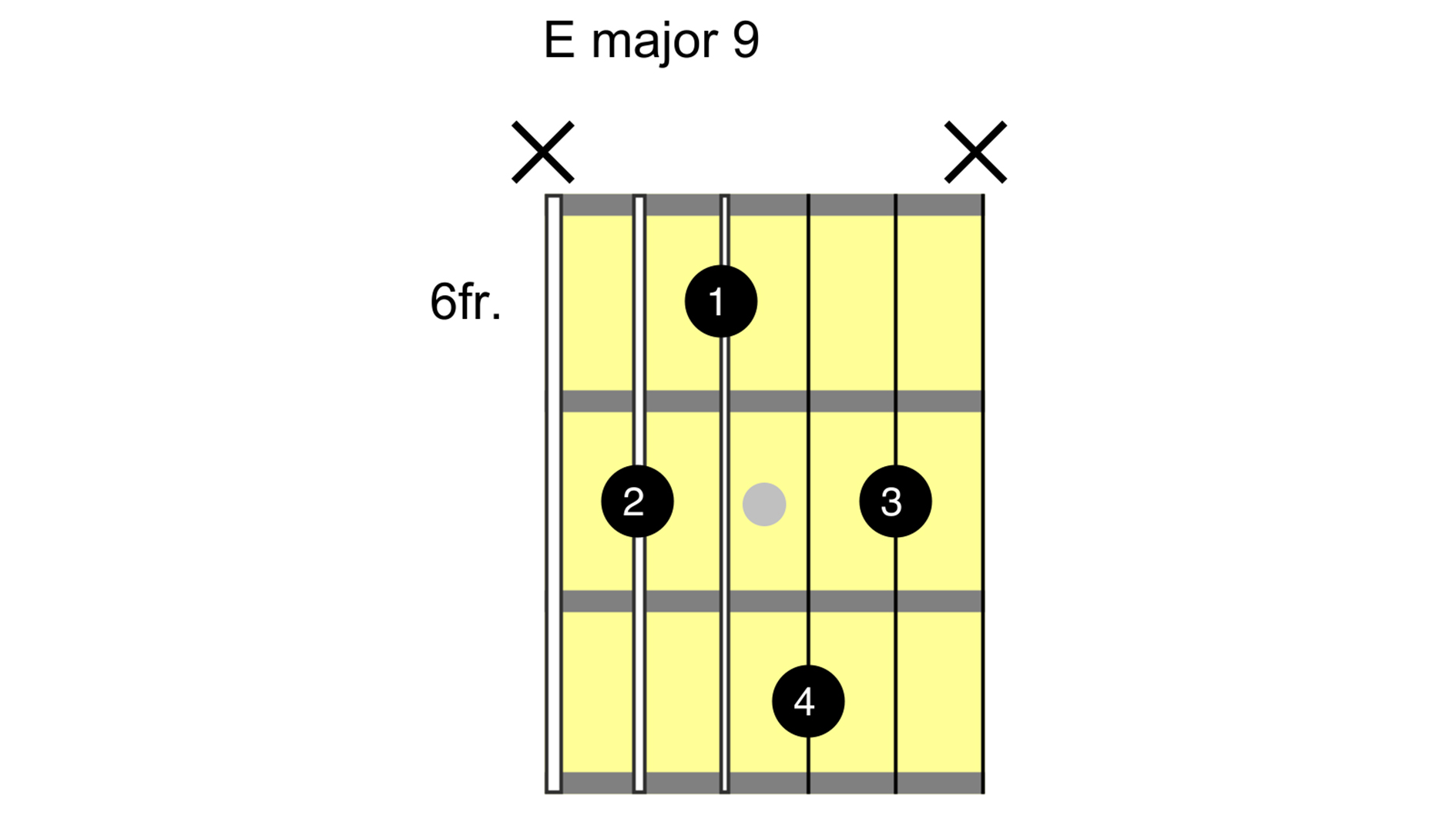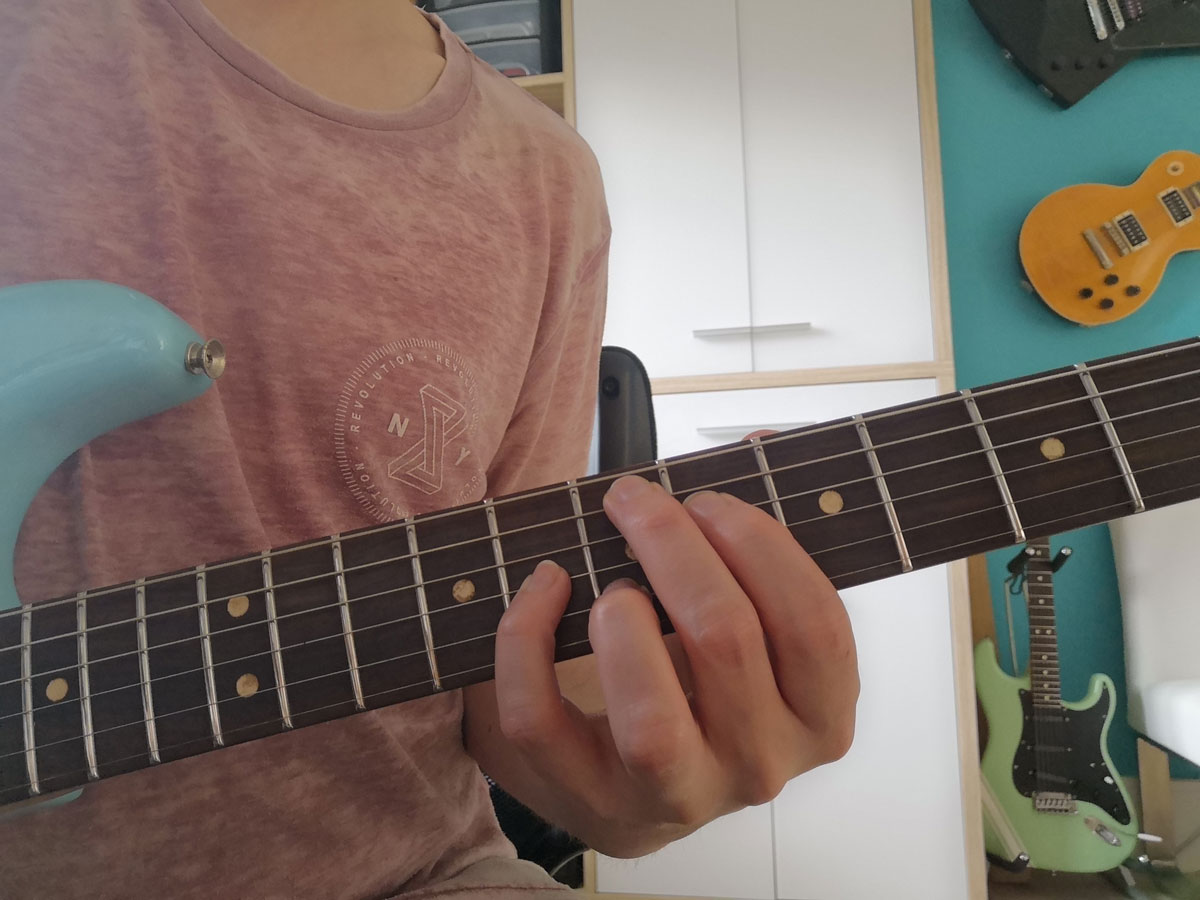How to play the E chord on guitar
Beginner guitar: Get to grips with one of the easiest and most useful chords you'll ever learn, as well as some tasty variations

Because the guitar has two E strings, E major is often the first chord beginners learn. It uses all six strings, so your strumming hand can go wild, it’s pretty easy, and it sounds great.
For the same reason, it’s also one of the most used chords in guitar music. In fact, it’s a rare guitar album that doesn’t have a version of this chord. So this guide on how to play the E chord on guitar is an essential for all players.
We’ll start by showing you open E major and E minor shapes. Then we’ll look at two popular barre chords, followed by a few extended E chords that you can use to impress your friends, wow your dates, and flex in guitar stores.
How to play the E chord on guitar: open E

Journey’s Don’t Stop Believin', AC/DC’s Back in Black, The Beatles’ Norwegian Wood, Fleetwood Mac’s Don’t Stop, and Stevie Ray Vaughan’s Pride and Joy all prominently feature open E chords.
Here's how to play the E chord on guitar in its most classic shape: first finger, fret 1 on the G string; second finger, fret 2 on the A string; and third finger, fret 2 on the D string.
Pick each string one at a time like our audio example to make sure every string is ringing clearly. If they’re choking, you’re probably either not fretting firmly enough, or accidentally touching a string that should be left open.


How to play the E chord on guitar: E minor

E minor is even easier: take the same shape you just used for E major, and remove your first finger. That’s it! It’s really easy to mute the G string with the underside of your third finger, so keep a really big gap there.
All the latest guitar news, interviews, lessons, reviews, deals and more, direct to your inbox!
If you do find that you keep muting the G string by mistake, there is some good news: the resulting chord is an open E5 power chord, and with distortion it sounds huge for big rock intros.


How to play the E chord on guitar: E barre chords



The E shape barre chord is right up at the 12th fret. Barring all six strings with your first finger, add your second finger to the G string, fret 13; your third finger to the A string, fret 14, and your fourth finger to the D string, fret 14. You can see how that is related to the basic open shape.


The A-shape barre chord is more commonly used for E. It’s at fret 7 – you barre from the A string to the high E. Then you fret the D, G, and B strings all at fret 9. You can either do that with a different finger for each string, or by barring with your third finger. They both sound equally good, so it’s really up to you which you play.
Although you normally avoid the low E string for A-shape barres, here you could leave it open for a really big sound.




How to play the E chord on guitar: E chord variations
E6



Starting with a normal open E major shape, add your fourth finger to the B string, fret 2. That gives an E6 chord. You can also use this as a substitute for C# minor 7 in a pinch, because it contains the same notes in a different order.
E7



If you’re up for a barre chord, try E7 using the A shape. It’s arguably easier than the regular E major barre, and sounds great for things like the intro to I Saw Her Standing There by the Beatles.
As with E major, barre fret 7. Then add your third finger onto the D string, fret 9, and fourth finger onto the B string, fret 9. The challenge is making sure your barring is clean enough to hear the G string fret 7 clearly. That’s the all important 7th note which gives the chord its name.
Emaj9



Up for a challenge? Try this Emaj9, as used by Stevie Ray Vaughan and John Mayer. It’s fiddly to get into, but it’s a beautiful sound. Second finger plays the A string, fret 7; first finger the D string, fret 6; third finger lands on the B string, fret 7; and your fourth finger plays the G string, fret 8.
Gear up with our beginner guitar guides
- Take your first steps with the best acoustic guitars for beginners
- Or plug in with the best beginner electric guitars
- Start them young with the best guitars for kids
- Essential guitar accessories for beginners
- Give you playing a boost with the best online guitar lessons
Jenna writes for Total Guitar and Guitar World, and is the former classic rock columnist for Guitar Techniques. She studied with Guthrie Govan at BIMM, and has taught guitar for 15 years. She's toured in 10 countries and played on a Top 10 album (in Sweden).

